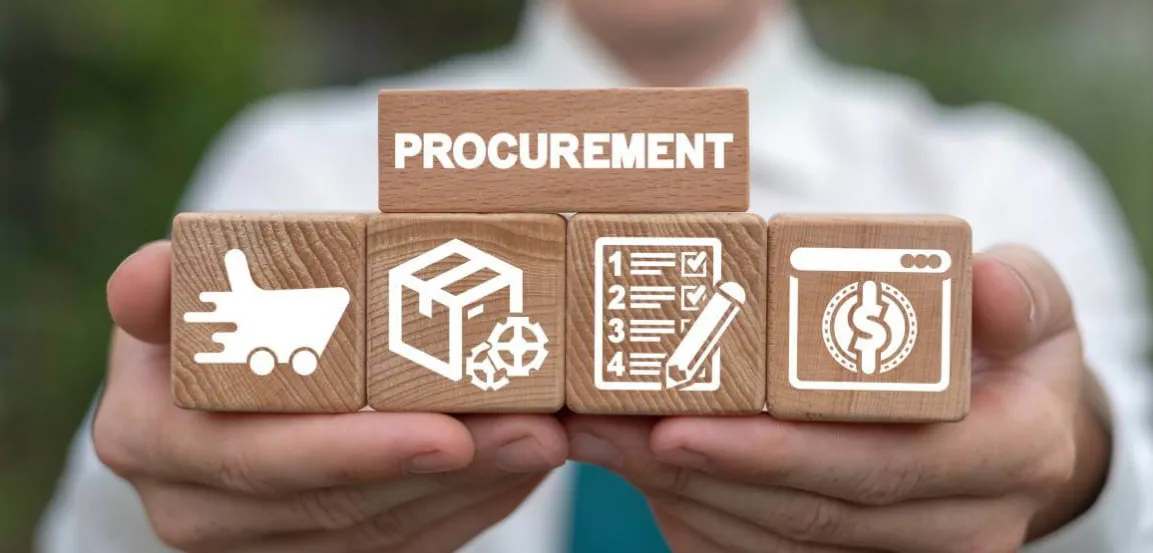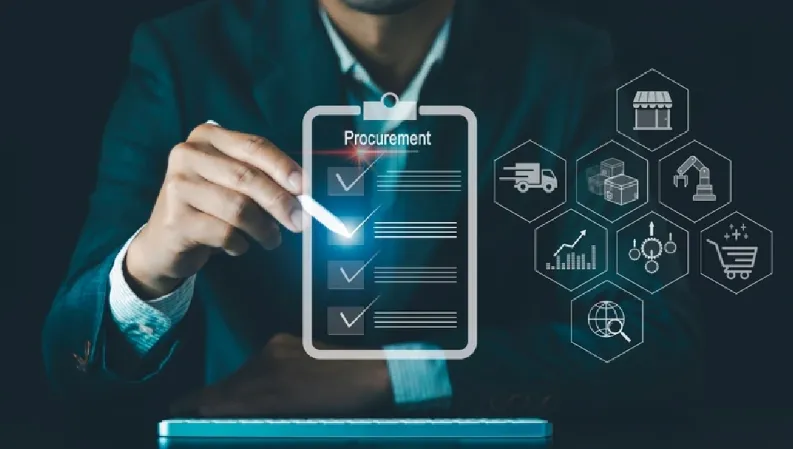Why the Procurement Process Matters: A Data-Backed Guide

If you're reading this, you already know the procurement process matters. But between knowing it's important and proving its value to your CFO—or fixing a broken system—lies a massive gap that costs organizations millions.
We've moved beyond theory. This guide delivers the evidence, frameworks, and actionable insights you need to transform procurement from a cost center into a strategic weapon.
Let's be clear: when we say "the process in procurement is very important," we're not talking about following bureaucratic steps. We're talking about creating a repeatable system that generates predictable outcomes.
What separates world-class procurement from the rest?
Top-performing organizations don't just process purchase orders faster. They leverage their procurement process to:
Lock in 8.5% average cost savings (Hackett Group)
Achieve 95%+ compliance rates
Reduce supply risk exposure by up to 40%
Cut sourcing cycle times by 30-50%
The difference isn't intention—it's implementation. And that implementation starts with understanding exactly what you're building and why.

Everyone talks about savings, but mature processes deliver value sophisticated CFOs actually care about:
Working Capital Optimization:
Extended payment terms negotiated through structured supplier management
Early payment discounts captured through streamlined invoice processes
Inventory reduction through better demand planning
Total Cost of Ownership (TCO) Management:
A structured process forces evaluation beyond unit price. Consider this manufacturing example:
| Cost Element | Traditional Approach | Strategic Process Approach |
|---|---|---|
| Unit Price | $100 | $105 |
| Freight | $15 | $12 (consolidated) |
| Quality Returns | 8% defect rate | 2% defect rate |
| Payment Terms | Net 30 | Net 60 |
| Effective Cost | $127.40 | $119.60 |
The "cheaper" supplier actually costs 6.5% more when you account for the full picture.
Reactive risk management costs 3-5x more than proactive prevention. A disciplined process builds protection through:
Supplier Vetting That Matters:
Financial health monitoring (D&B scores, payment history)
Geopolitical risk assessment
Business continuity plan verification
Compliance certification tracking

Contract Management That Prevents Problems:
One client discovered 23% of active contracts had auto-renewal clauses they didn't want. Their "informal process" was costing them $2.3M annually in unnecessary renewals.
"Shadow spending" isn't just a control issue—it's a financial leak. Organizations with poor procurement processes typically see:
15-25% of spend occurring outside approved channels
40% higher maverick spending during rapid growth periods
3x more compliance violations in regulated industries
A documented process with appropriate controls typically recovers 80-90% of rogue spend within two quarters.
Transactional procurement gets today's order. Strategic procurement secures tomorrow's advantage.
The Innovation Pipeline:
When you move beyond price negotiations to structured supplier development, you unlock:
Joint product development opportunities
Exclusive access to new technologies
First-to-market advantages
Shared continuous improvement initiatives
One automotive supplier credited their structured supplier innovation program with 42% of their patent filings over five years.
Poor processes have clear, measurable impacts:
Financial Leakage Examples:
A tech firm lost $4.7M annually through unmanaged software license renewals
A retailer paid 22% above market for logistics services due to fragmented contracting
A manufacturer incurred $850K in expediting fees in one quarter alone
Operational Impacts:
35% longer time-to-market for new products
50% more supply disruptions
28% lower supplier performance scores
The ESG Blindspot:
Without a rigorous process, ESG commitments remain empty promises. One consumer goods company discovered 60% of their "sustainable" suppliers couldn't provide basic compliance documentation when audited.

Spend analysis that goes beyond categorization to identify leverage opportunities
Market intelligence integrated into sourcing strategy
Stakeholder alignment through formal governance
Implementation Tip: Start with a 12-month category management roadmap that aligns with business objectives, not just procurement goals.
A tiered approach ensures resources match strategic importance:
| Tier | Criteria | Management Approach |
|---|---|---|
| Strategic | Top 10% by spend/impact | Quarterly business reviews, joint planning, innovation workshops |
| Leverage | High spend, low differentiation | Performance management, continuous cost improvement |
| Transactional | Low spend, low risk | Streamlined processes, self-service portals |
The heart of your process needs rigor:
RFx Development That Gets Results:
Weighted criteria aligned to business objectives (not just price)
Scenario analysis for different award strategies
Supplier capability assessments beyond what's on paper
Negotiation Planning That Wins:
The most successful negotiations happen before anyone sits at the table. Preparation should include:
Best Alternative to Negotiated Agreement (BATNA) definition
Concession planning with clear trade-offs
Stakeholder alignment on walk-away positions
Optimizing this area typically generates 200-300% ROI through:
Electronic catalog management
Three-way match automation
Dynamic discounting programs
What gets measured gets managed. Essential metrics include:
Cost savings as percentage of addressed spend
Procurement cycle time by category
Supplier performance against SLAs
Process compliance rates
Phase 1: Assessment (Weeks 1-4)
Process maturity evaluation
Spend analysis and opportunity identification
Stakeholder interviews and pain point mapping
Phase 2: Strategy Development (Weeks 5-8)
Category strategy development
Technology stack evaluation
Organizational design and capability assessment
Phase 3: Implementation (Months 3-9)
Process redesign and documentation
Technology implementation
Change management and training
Phase 4: Optimization (Ongoing)
Performance monitoring
Continuous improvement initiatives
Capability development
A procurement partner makes sense when:
You lack specific category expertise
Internal resources are constrained
You need rapid transformation
Objective market intelligence is critical
Selecting the Right Partner:
Look for demonstrated category expertise, not just general procurement knowledge
Require transparent pricing models aligned with your outcomes
Evaluate their technology and analytical capabilities
Ask for specific case studies with measurable results
Understanding why procurement matters is the starting point. Taking action is what separates market leaders from the rest.
Immediate Actions (This Week):
Conduct a quick spend analysis—what percentage is with preferred suppliers?
Review your top 5 contracts—do you understand all terms and renewal dates?
Survey internal stakeholders—what are their biggest procurement pain points?
Strategic Planning (Next 90 Days):
Develop a business case for process improvement using the data in this guide
Create a category prioritization matrix based on spend and strategic importance
Establish baseline metrics for your current procurement performance
Download Our Procurement Health Assessment Toolkit
Get the detailed checklist we use with clients to evaluate procurement maturity and identify quick-win opportunities.
[Download Now - Includes ROI Calculator & Business Case Template]
Schedule a Procurement Strategy Session
Our specialists can help you assess your current state and build a roadmap for transformation in a 30-minute consultation.
1. Q: How do we get other departments (like Marketing or R&D) to follow the procurement process without creating friction?
A: This is a change management challenge, not a procedural one. The key is to embed yourself as a facilitator, not a gatekeeper. Assign procurement business partners to key departments to understand their goals early. Co-develop category strategies with them and use their language—frame process adherence as a way to "ensure campaign launches aren't delayed by contract issues" or "protect intellectual property during vendor collaborations."
2. Q: Our company is too small for a multi-tiered supplier program. What's the minimum viable process we need?
A: Focus on the "critical few." Start with a mandatory supplier questionnaire for any new vendor over a set spend threshold. Implement a simple, central contract repository (even a shared drive with a standard template). Most importantly, establish a quarterly business review with your top 3-5 suppliers by spend or impact. This covers 80% of the value with 20% of the effort.
3. Q: What specific clauses in a contract best protect us from supply chain disruptions?
A: Beyond standard Force Majeure, insist on detailed business continuity plan disclosure and right-to-audit clauses for operational resilience. Also, include inventory stocking obligations and alternate shipping route requirements. These proactive clauses are more effective than penalty clauses after a disruption has already occurred.
4. Q: We're implementing new procurement software. How do we ensure our team actually uses it and we get a return on our investment?
A: Technology fails without adoption. Run a parallel pilot process (old way vs. new way) for one month and showcase the time savings quantitatively. Identify and empower "process champions" in each team. Most importantly, integrate the software's KPIs into individual performance goals—what gets measured and rewarded gets done.
5. Q: How can we measure the procurement function's impact on innovation, not just cost savings?
A: Track leading indicators, not just lagging financials. Create metrics like: "Number of supplier-introduced product improvements adopted," "Percentage of projects with early supplier involvement," or "R&D cycle time reduction attributed to supplier collaboration." This shifts the perception of procurement from cost-cutters to value-creators.
6. Q: What's the most common mistake companies make when trying to improve their procurement process for the first time?
A: They try to boil the ocean. They design a "perfect" end-to-end process that's so complex it collapses under its own weight. The most successful transformations start by picking one painful, high-visibility category (like contingent labor or marketing agencies), fixing that process completely, and using the quick win to build momentum for wider rollout.
7. Q: Our requests are often too urgent for a full competitive bidding process. What's a compliant way to handle this?
A: Create a pre-approved "Urgent Needs" protocol. This involves maintaining a vetted pool of suppliers for critical categories who have already agreed to pre-negotiated rates and terms. When an emergency hits, you can issue a direct award from this pool and document the justification under the "urgent need" protocol, maintaining both speed and compliance.
8. Q: How do we effectively integrate ESG (Environmental, Social, Governance) factors without it just being a "checkbox" exercise?
A: Move beyond questionnaires. Integrate ESG metrics directly into your supplier scorecard with meaningful weightings (e.g., 15-20% of total performance evaluation). Conduct spot audits on a subset of critical suppliers. Most importantly, include ESG performance as a non-negotiable gate criteria for contract renewal, making it a business imperative, not an afterthought.
9. Q: What is the role of procurement in a company that's heavily involved in mergers and acquisitions (M&A)?
A: Procurement is critical for post-merger integration and due diligence. During due diligence, procurement assesses the target's supplier contracts, identifying liabilities, risks, and cost-saving synergies. Post-acquisition, procurement leads the effort to rationalize the combined supplier base, leverage increased spending power, and integrate disparate processes onto a single platform.
Contact us
Call Us: +86 193 7668 8822
Email:[email protected]
Add: Building B, No.2, He Er Er Road, Dawangshan Community, Shajing Street, Bao'an District, Shenzhen, China